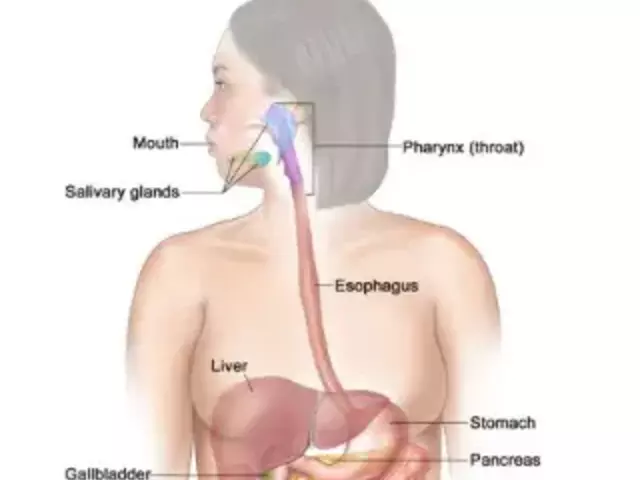Obstructive pulmonary disease can be a challenging condition, especially for older adults. As the lungs' airways become blocked or narrowed, breathing can become difficult and everyday tasks can feel insurmountable. It’s crucial to understand how to manage this condition effectively to improve quality of life.
Early recognition of symptoms such as shortness of breath, chronic cough, and frequent respiratory infections can make a significant difference. Regular check-ups and diagnostic tests, like spirometry, can help in assessing the severity and planning appropriate treatments.
While medications are often necessary, lifestyle changes play a vital role. Quitting smoking, avoiding pollutants, and adopting a nutritious diet can help manage the symptoms of obstructive pulmonary disease. Regular, suitable exercises also strengthen the respiratory muscles and enhance overall health.
Finally, the support from caregivers and family members can provide much-needed encouragement and assistance, making daily tasks more manageable and ensuring adherence to treatment plans.
- Understanding Obstructive Pulmonary Disease
- Recognizing the Symptoms
- Diagnosis and Medical Treatments
- Importance of Lifestyle Changes
- Role of Nutrition and Exercise
- Support and Caregiver Roles
Understanding Obstructive Pulmonary Disease
Obstructive pulmonary disease (OPD) is an umbrella term that includes conditions such as chronic obstructive pulmonary disease (COPD), emphysema, and chronic bronchitis. These conditions are characterized by blocked airflow, making it hard for individuals to breathe. Affecting millions worldwide, especially older adults, OPD manifests in various forms, often exacerbated by environmental factors and lifestyle choices.
One of the primary causes of OPD is smoking. The harmful chemicals in tobacco smoke damage the lung’s airways and tiny air sacs called alveoli, leading to inflammation and narrowing of these passages. Exposure to secondhand smoke, air pollution, and occupational hazards like dust and chemicals also contributes significantly. Genetic factors, though less common, can predispose some individuals to these diseases even if they have never smoked.
The human body relies heavily on the respiratory system to deliver oxygen to the bloodstream and remove carbon dioxide. When the lungs are compromised by OPD, the efficiency of this exchange diminishes, leading to symptoms like chronic cough, shortness of breath, and frequent respiratory infections. Over time, these symptoms can lead to more severe complications, influencing other bodily functions and overall health.
It’s crucial to note that OPD is not a single entity but a spectrum of diseases, each with unique characteristics and challenges. Chronic bronchitis, for instance, is marked by a persistent, mucus-producing cough, whereas emphysema involves the gradual damage of lung tissue, particularly the destruction of alveoli. COPD is often a combination of both chronic bronchitis and emphysema, resulting in a more complex progression.
Early diagnosis and management can greatly improve the quality of life for individuals with OPD.
According to the American Lung Association, “Quitting smoking is the most important step one can take to improve lung health and manage COPD effectively.”Regular medical check-ups and diagnostic tests such as spirometry are essential to measure lung function and determine the severity of the condition. This allows healthcare providers to tailor treatment plans that may include medications, respiratory therapies, and other interventions.
Preventing further lung damage is also paramount. This involves avoiding exposure to lung irritants, adhering to prescribed treatments, and making lifestyle changes aimed at improving respiratory fitness. Vaccinations for influenza and pneumonia can help reduce the risk of infections, which are particularly hazardous for those with existing lung conditions.
The management of OPD also encompasses patient education. Understanding the disease, recognizing early signs of exacerbation, and knowing when to seek medical help can empower individuals to take charge of their health. Support groups and educational workshops can provide additional resources and emotional encouragement, which are vital components of long-term care.
Recognizing the Symptoms
Recognizing the symptoms of obstructive pulmonary disease early can drastically change the outcome for older adults. One of the most recognizable signs is shortness of breath, often noticed during daily activities like walking or climbing stairs. This breathlessness can progress over time if left unchecked, making even simple tasks feel exhausting.
Another key symptom is a persistent, chronic cough. This isn't just any cough but one that produces mucus and lingers for more than several weeks. It often worsens in the mornings and can disrupt sleep, leading to fatigue and irritability. This persistent cough is sometimes misleadingly considered a ‘smoker’s cough,’ but should never be taken lightly.
Frequent respiratory infections are also notable signs. If an older adult is catching colds more often or finds it harder to recover from the flu or respiratory infections, it could be an indication of obstructive pulmonary disease. The weakened lungs are more susceptible to infections, making preventive care such as vaccinations important.
Wheezing or a high-pitched sound when breathing is another common symptom. This happens because the airways are narrowed or obstructed, making it harder for air to move in and out of the lungs. It’s often more noticeable during physical exertion or at night.
Unintentional weight loss might seem unrelated, but it’s a significant symptom as well. Chronic obstructive pulmonary disease often requires more energy to breathe and this can lead to a higher calorie burn, causing unexpected weight loss. Furthermore, the difficulty in breathing can also reduce appetite, contributing to weight loss and muscle wasting.
Chest tightness or discomfort is another symptom that can be mistaken for other conditions. This sensation can feel like a heavy weight or tight band across the chest, causing distress and anxiety, particularly among older adults.
Cyanosis, or a bluish tint to the lips or fingernail beds, is a more serious symptom indicating oxygen deprivation. This happens because the lungs aren’t delivering enough oxygen throughout the body, a condition that requires immediate medical attention.
According to the American Lung Association, recognizing symptoms early and seeking treatment improves the quality of life for those with chronic obstructive pulmonary disease.Identifying these symptoms promptly is crucial. It’s not just about managing the disease but maintaining a sense of independence and well-being for older adults. Regular consultations with healthcare providers and proactive measures can make a significant difference in managing this condition.

Diagnosis and Medical Treatments
When managing obstructive pulmonary disease in older adults, accurate diagnosis is the first critical step. Recognizing the condition early allows for more effective interventions and a better quality of life. Symptoms like persistent cough, wheezing, shortness of breath, and frequent chest infections should prompt medical attention. Physicians often use a combination of patient history, physical examinations, and diagnostic tests to confirm the condition.
One of the primary diagnostic tools is spirometry, which measures how much air one can inhale and exhale, as well as how quickly one can exhale. This test provides valuable insights into the lung function and helps in identifying airway blockages. Chest X-rays and CT scans are other common diagnostic tools, letting doctors visualize the lungs and detect any abnormal structures or blockages.
Blood tests can also play a role in diagnosing the disease. They help rule out other conditions and can check for signs of infections. In some instances, doctors may recommend arterial blood gas analysis, which measures oxygen and carbon dioxide levels in the blood. This test gives a clear picture of how well the lungs are functioning.
Once diagnosed, medical treatments become crucial for managing symptoms and preventing exacerbations. Bronchodilators, which are medicines that relax the muscles around the airways, are commonly prescribed. They help to open the airways and make breathing easier. Inhaled corticosteroids can reduce lung inflammation, easing the symptoms considerably.
Combination inhalers are also available and may include both a bronchodilator and a corticosteroid. These can be more convenient for patients, ensuring they receive comprehensive treatment in a single inhaler. Doctors may prescribe antibiotics if there is an underlying bacterial infection causing flare-ups. Vaccinations, especially for influenza and pneumonia, are highly recommended to prevent serious respiratory infections.
Oxygen therapy might be necessary for those with severely low blood oxygen levels. Portable oxygen tanks or concentrators can offer relief and make mobility easier. Pulmonary rehabilitation is another beneficial treatment that combines education, exercise training, and nutritional advice to improve overall lung health and stamina.
"Pulmonary rehabilitation has shown to significantly improve the quality of life for people suffering from chronic lung diseases," says Dr. Jane McCarthy, a pulmonologist specializing in elderly care.
In some severe cases, surgical options like lung volume reduction surgery or even a lung transplant may be considered. These are generally last-resort options and come with their own sets of risks and benefits.
Regular follow-ups with healthcare providers are essential to monitor the disease's progression and adjust treatments as needed. These follow-ups often include additional spirometry tests, imaging, and blood tests to ensure the chosen treatment plan is effective.
An interesting fact is that managing obstructive pulmonary disease involves a multidisciplinary approach. Not only pulmonologists but also dietitians, physical therapists, and psychologists may be part of the care team, providing comprehensive care tailored to the individual's needs. This integrative approach aims to improve the patient's overall well-being, not just lung health.
Importance of Lifestyle Changes
Adopting healthier lifestyle habits can have an immense impact on managing obstructive pulmonary disease in older adults. One of the most crucial changes involves quitting smoking. Smoking cigarettes is one of the primary causes of chronic obstructive pulmonary disease (COPD), and continuing the habit can significantly worsen the condition. The sooner a person quits, the better it is for their lungs, even if they have smoked for many years. It's never too late to see benefits.
Avoiding pollutants is another essential factor. Older adults should stay indoors on days when air quality is poor or when there is high pollen count. Using air purifiers at home can help in creating a cleaner breathing environment. It can also be helpful to avoid using strong household cleaners or being in areas where dust and mold are prevalent.
Incorporating regular physical activity is also critical. Simple exercises like walking, yoga, and light aerobics can improve overall lung function and make daily tasks easier. Exercises that strengthen the respiratory muscles, such as breathing exercises, can be particularly beneficial. It's important to start slow and gradually increase the intensity to avoid overexertion.
Nutrition plays an important role in managing pulmonary disease. A balanced diet high in fruits, vegetables, lean proteins, and whole grains can boost the immune system and help maintain a healthy weight. Foods rich in antioxidants, such as berries and leafy greens, are particularly beneficial. Staying hydrated by drinking plenty of water can also help thin mucus, making it easier to clear the airways.
Sleep quality should not be overlooked. Ensuring a good night's sleep can help manage stress levels and improve overall health. Using breathing aids like CPAP machines for those with sleep apnea can enhance sleep quality and oxygen levels. Creating a comfortable sleeping environment and adhering to a regular sleep schedule can make a big difference.
Regular check-ups with healthcare providers will help monitor the progression of the disease and adjust treatments as necessary. Vaccinations like the flu shot and pneumonia vaccine are essential for preventing infections that can complicate respiratory issues. Having a solid support network, including friends, family, and healthcare professionals, can provide the necessary encouragement and assistance.
Here is a breakdown of some essential lifestyle changes in a tabular form for a quick overview:
| Lifestyle Change | Benefit |
|---|---|
| Quit Smoking | Reduces lung damage |
| Avoid Pollutants | Improves air quality |
| Regular Physical Activity | Strengthens respiratory muscles |
| Balanced Diet | Boosts immune system |
| Quality Sleep | Enhances overall health |
| Regular Check-Ups | Monitors disease progression |
Singer and lung disease advocate Patti LaBelle once said, "I've learned that making healthier choices isn't as hard as I once thought, and the benefits are truly life-changing." This quote encapsulates the idea that making small, consistent changes can lead to significant improvements in managing obstructive pulmonary disease.

Role of Nutrition and Exercise
When it comes to managing obstructive pulmonary disease, nutrition and exercise are two areas that deserve special attention. These aren’t just lifestyle add-ons; they form the cornerstone of a comprehensive management plan. Diet and physical activity can substantially impact lung health, helping to ease symptoms and improve overall well-being.
Firstly, let’s talk about nutrition. Certain foods have properties that can either help or hinder patients with obstructive pulmonary disease. For instance, a diet rich in fruits, vegetables, and lean proteins can provide essential nutrients that help keep the immune system strong and reduce inflammation. Omega-3 fatty acids, found in fish like salmon and sardines, are known to lower inflammation and could benefit lung health.
Avoiding foods that cause gas and bloating, such as beans and carbonated drinks, can make breathing easier. Bloating puts pressure on the diaphragm, increasing the difficulty of taking deep breaths. Being mindful of portion sizes and opting for smaller, more frequent meals can also help.
“Adequate nutrition is essential for individuals with respiratory disease, as their energy expenditure is often increased due to the labor of breathing,” says the American Lung Association.
Hydration is another key factor. Staying well-hydrated by drinking plenty of water can help thin the mucus, making it easier to clear from the lungs. Dairy products, though nutritious, should be consumed in moderation since they can thicken mucus in some people.
On to exercise. While it may seem counterintuitive to emphasize physical activity when breathing is already challenging, the right kinds of exercises can actually strengthen respiratory muscles and improve overall lung function. Aerobic exercises such as walking, swimming, and cycling improve cardiovascular health and increase lung capacity over time.
Strength training exercises are also beneficial. They enhance muscle function and endurance, making daily activities less exhausting. Gentle exercises like yoga and Tai Chi can help improve flexibility and encourage mindful breathing practices, which can be incredibly helpful for those struggling with shortness of breath.
It’s essential to consult healthcare providers before starting any exercise program. They can design a routine tailored to individual capabilities and needs. Activities should be initiated slowly and gradually increased in intensity to avoid overexertion.
A balanced approach that combines good nutrition and regular exercise can make a substantial difference in managing obstructive pulmonary disease. Besides improving lung function, these lifestyle changes can enhance quality of life, mood, and overall physical health.
Support and Caregiver Roles
Managing obstructive pulmonary disease, especially in older adults, requires a strong support system. Caregivers often play an essential role in ensuring the well-being of their loved ones. They help by providing emotional support, managing medical appointments, and assisting with daily activities that might be challenging due to shortness of breath or fatigue.
Caregivers can help by reminding patients to take their medications on time and monitoring any potential side effects. This vigilance is crucial, as older adults might sometimes forget their medication schedules or be unaware of adverse reactions. Furthermore, caregivers can assist in preparing meals that are nutritious and suitable for someone with obstructive pulmonary disease, emphasizing balance and dietary needs.
Encouraging older adults to stay active is another vital role of caregivers. Simple exercises like walking, stretching, or breathing exercises can make a big difference in lung capacity and overall health. Joining them in these activities can also offer moral support and motivation. A regular exercise routine aids in strengthening respiratory muscles, which is beneficial for better breathing.
Creating a safe and comfortable living environment is also part of the caregiver's job. This includes reducing exposure to pollutants, allergens, and other irritants that could worsen pulmonary symptoms. Ensuring proper ventilation, keeping the living space clean, and avoiding the use of strong chemicals can create a healthier environment.
The emotional aspect should not be overlooked. Chronic conditions can lead to feelings of depression or anxiety. Simple gestures like listening, engaging in conversations, or accompanying them to support groups can offer immense emotional relief. According to the American Lung Association, the companionship and emotional support provided by caregivers can significantly improve the mental health of those living with chronic lung disease.
“The role of the caregiver goes beyond the physical; providing emotional and psychological support is equally important in the journey towards better health,” states Dr. Jane Smith of the American Lung Association.
Staying informed and educated about the condition helps caregivers offer the best support possible. Attending medical appointments, asking questions, and seeking advice from healthcare professionals ensures they are well-prepared. Many organizations, like the American Lung Association, offer resources and training for caregivers to improve their skills and knowledge regarding obstructive pulmonary disease management.
The importance of the support system for older adults battling obstructive pulmonary disease cannot be overstated. Combining medical management with daily support and care can lead to a significant improvement in the quality of life.






Post A Comment